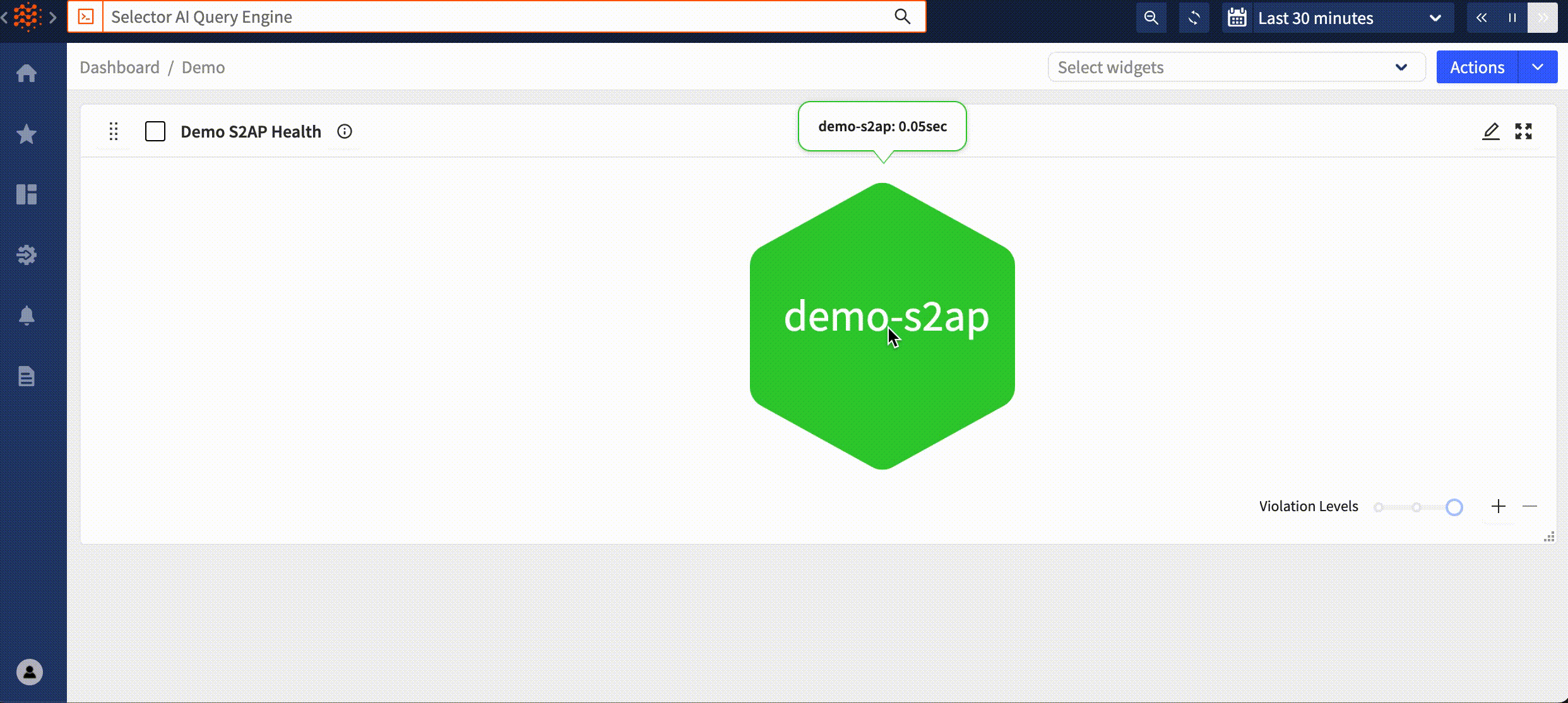Introduction
In the last blog, Collaboration-Centric AIOps, we discussed how deep integration into common collaboration tools combined with human operations experience, leads to rapid root cause identification and resolution. In this blog, we explore some of the advanced capabilities available to operations experts that allow them to do problem-specific analysis and take problem-specific action.
Natural language queries
AIOps has to be not just powerful, it has to be usable. The Selector AI analytics engine consists of a relational database, a time series database, a knowledge graph, and other important information repositories. The solution would not be usable if SRE/NetOps teams had to handcraft complex queries for each type of repository. Even the need for complex SQL queries would by itself make the solution cumbersome and slow to use. Selector AI makes it easy to extract data and create visualizations using natural language queries.
As Figure 1 shows, significant complexity is hidden behind easy to use, intuitive, natural language queries. These natural language queries can be used to generate on-demand visualizations within collaboration tools and to create widgets for the expert portal. Visualizations look exactly the same in both the collaboration environments and the Selector AI portal, which is itself a differentiating aspect of the Selector AI solution.
An important aspect of Selector AI’s natural language queries is its dynamism. As more data is digested, the vocabulary of the language grows. As the solution learns from meta-data that Chicago, for example, is a location, then natural language queries automatically recognize that Chicago is a location. No software update is required, no complex query syntax to identify Chicago as a location, queries automatically learn from meta-data. The knowledge and power of the natural language query is impressive out of the box, but also keeps evolving over time.
Natural language queries can be used directly within popular collaboration tools, rendering visualizations that are a) powerful and b) exactly the same as visualizations in the expert portal. Seamless analysis across collaboration tools and expert tools; seamless analysis across operations teams.
Gone with archaic hard-coded CLIs. Powerful, intuitive, and dynamic. The next generation approach to extract specific analysis, for specific problems.
Expert Portal
The proliferation of point tools, for point problems, has led to point portals. Each solution has its own pane of glass. Not just an additional pane of glass, but as a large-screen pane of glass as the only significant interface to the analytics.
In the Selector AI solution, operations teams get the same rendering whether they are using a smartphone, a desktop, or a laptop. These screens are sufficient to collaborate for many use cases, regardless of location or device.

While an expert portal is the only interface for many tools, it is an option for the Selector AI solution. The option exists primarily because collaboration tools do not support all capabilities, and we know there is additional value we can provide when SRE/NetOps teams are doing a deep dive. The Selector AI Expert portal allows customers to drill down to raw data, see many different data types on a single timeline, and initiate resolution actions.
Invoking the expert portal is easily done within collaboration tools. The transition from immersive collaboration to the expert tool is seamless with a contextual hyperlink. This hyperlink can also be used to enrich ticketing systems.
Conclusion
There is powerful functionality directly integrated into tools like Slack and Microsoft Teams to achieve Selector AI immersive collaboration. There are also times when operations experts need to leverage capabilities not enabled in collaboration tools, and with Selector AI, that transition is seamless; called directly from collaboration tools and rendered the same in both environments. For SRE/NetOps experts, natural language queries are simple but powerful — AI is now usable and understandable. When a resolution is decided, action can be taken directly from Selector AI. For all team members, regardless of their skills, experience, and role, there is a Selector UX fit for the job. AI/ML for operations novices and AI/ML for operations experts.